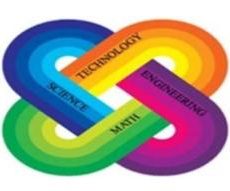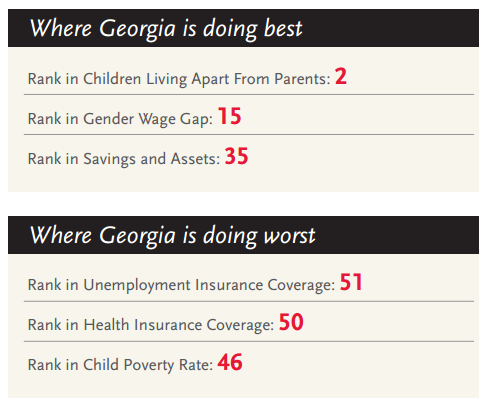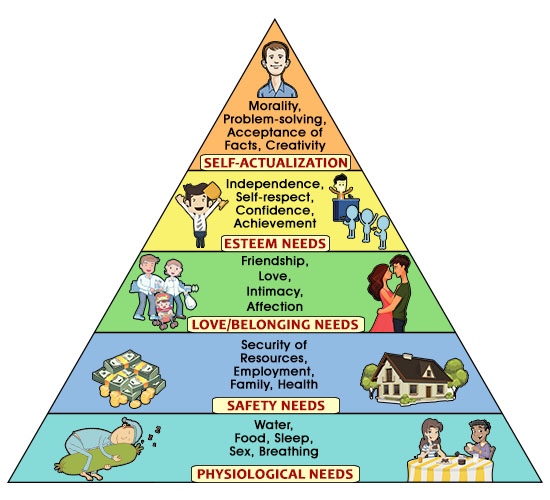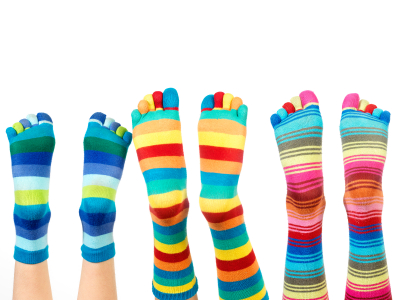Georgia is not generally viewed as a wealthy state, an educated state or a healthy state, and those stereotypes got more substantiated with the release of the most current “State of the States” analysis from the Center for American Progress. Georgia ranked below average on most of 15 “key” indicators – and was near the bottom on some.
The center analyzed official data for all 50 states and the District of Columbia and calculated rankings on 15 measures. Of those 15 measures, Georgia ranked below average on 13.
Viewing the full report is enlightening on many topics; however, this post will focus on the areas most crucial to the health and well-being of our schools and children.
Poverty in Georgia is affecting our Schools
On child poverty, Georgia ranked 46th: more than one-quarter of all children under the age of 18 were in families that had incomes below the poverty line. (24,000 for a family of 4) High rates of teen pregnancy (also a low ranking Georgia category) are often associated with poverty, the need for government support, low educational attainment and limited income potential for decades.
How does Poverty affect a Child’s ability to Learn?
As we look as Maslow’s Hierarchy of needs, we are reminded that it is complicated, if not impossible, to ask a student who is hungry or missing one of their physiological needs to be able to perform higher on the pyramid. Being creative, problem-solving and attaining new knowledge has low priority when a child is distracted by their stomach growling.
Since STEM concepts require self-actualization. It is a struggle to bring those concepts to students who are concerned about their safety or have self-esteem needs. All of these concerns can exist as obstacles to the learning process. The good news is that being informed and educated about these situations can help educators make informed decisions and help students climb their way up the pyramid.
How Schools and Educators are Fighting Poverty and Supporting Students.
Recently Danielsville Elementary held a sock drive to serve a need that the teachers’ saw. Mrs. Angie Waggoner, Principal at DES, said that teachers were noticing that many students were missing socks. DES is located in a high poverty district but is blessed with community support. They reached out to the school community and other parents and held a sock drive. The joy in receiving a new pair of Spiderman socks is contagious and warm feet help students to move past those physiological needs and on to higher purposes. Socks may seem like a small thing but they can be a big obstacle to the learning process if kids need them.
Mrs. Amy Harbin, teacher at Commerce Primary School in Commerce, Ga reports that their routinely pack bookbags full of food to send home with children on the weekends who they know are of need of nourishment and support. “Knowing that they are going home to no food from Friday afternoon until Monday at breakfast was heartbreaking. We finally decided we just had to do something” Harbin explains.
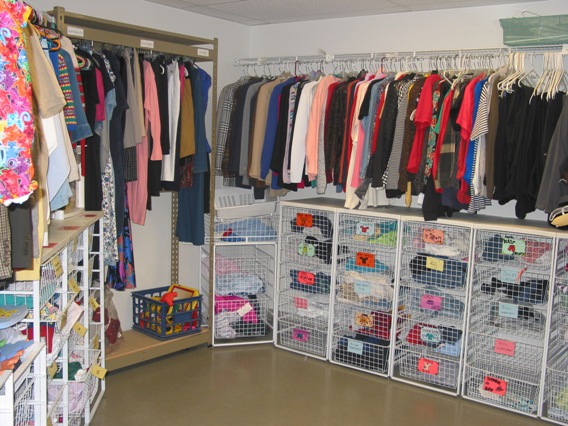 Teachers across the state are making sacrifices and doing whatever they can to help eliminate learning obstacles for students. Recently, Madison County High School in north Georgia began a clothes closet to serve middle school and high school students. Sometimes the student has simply grown, especially in shoe size, and the parent is unable to afford the next size up in immediately. Frequently, students visit the clothes closet to find clothing for job interviews or career related pursuits that otherwise they cannot afford. Melissa Conway, Instructional Leader at MCHS, says that she has seen the program make a huge difference in kids. It improves their self- esteem and motivation by just knowing that an adult in our school building cares for them. Conway explains, “When they are able to show up to school in a new pair of sneakers, sometimes that is all it takes to get them motivated and on task for learning. They feel great and that self esteem transfers into a motivated student which is good for the entire school and community.” Teachers and community members stock the closet with gently used and sometimes new clothing and hygiene items. Students are approached by teachers or the counselors discreetly as needs are recognized.
Teachers across the state are making sacrifices and doing whatever they can to help eliminate learning obstacles for students. Recently, Madison County High School in north Georgia began a clothes closet to serve middle school and high school students. Sometimes the student has simply grown, especially in shoe size, and the parent is unable to afford the next size up in immediately. Frequently, students visit the clothes closet to find clothing for job interviews or career related pursuits that otherwise they cannot afford. Melissa Conway, Instructional Leader at MCHS, says that she has seen the program make a huge difference in kids. It improves their self- esteem and motivation by just knowing that an adult in our school building cares for them. Conway explains, “When they are able to show up to school in a new pair of sneakers, sometimes that is all it takes to get them motivated and on task for learning. They feel great and that self esteem transfers into a motivated student which is good for the entire school and community.” Teachers and community members stock the closet with gently used and sometimes new clothing and hygiene items. Students are approached by teachers or the counselors discreetly as needs are recognized.
What can we do?
As STEM educators seek to plan, design and provide innovative lessons, we always must consider the status of our students and their hierarchy of needs. Contact your Georgia representatives and ask them to continue to fund educational programs and incentives to allow schools to use their limited resources to help students instead of making sacrifices to keep personnel on staff and the schools open for business. Only when lawmakers and other stakeholders know the importance of this aspect will be able to make real change in Georgia and Race to the Top of Education in the US.
